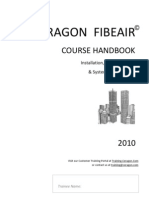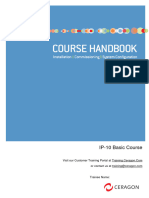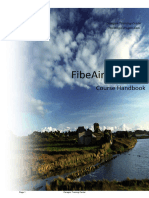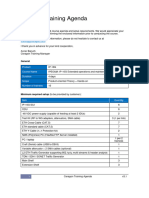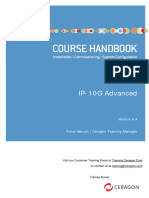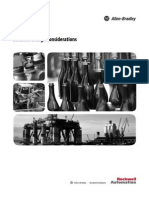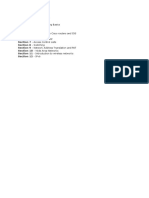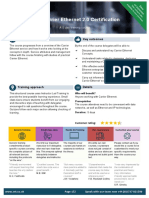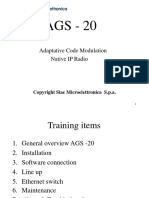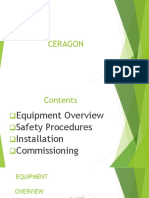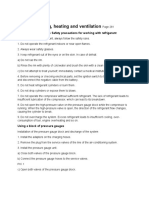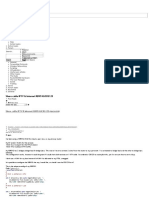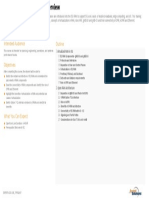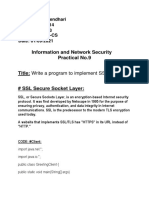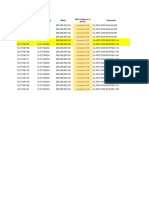0% found this document useful (0 votes)
52 views7 pagesIP20 - Advanced Training Syllabus
The Ceragon Training Syllabus outlines a 5-day advanced course on the FibeAir IP-20 product, focusing on installation, operation, and maintenance of microwave transmission networks. Participants will learn about radio transmission principles, Ethernet protocols, and advanced configuration techniques, aimed at System Engineers and Network Deployment Engineers. The course includes both theoretical and hands-on training, covering a wide range of topics essential for effective performance management and troubleshooting of Ceragon products.
Uploaded by
vidurav@gmail.comCopyright
© © All Rights Reserved
We take content rights seriously. If you suspect this is your content, claim it here.
Available Formats
Download as PDF, TXT or read online on Scribd
0% found this document useful (0 votes)
52 views7 pagesIP20 - Advanced Training Syllabus
The Ceragon Training Syllabus outlines a 5-day advanced course on the FibeAir IP-20 product, focusing on installation, operation, and maintenance of microwave transmission networks. Participants will learn about radio transmission principles, Ethernet protocols, and advanced configuration techniques, aimed at System Engineers and Network Deployment Engineers. The course includes both theoretical and hands-on training, covering a wide range of topics essential for effective performance management and troubleshooting of Ceragon products.
Uploaded by
vidurav@gmail.comCopyright
© © All Rights Reserved
We take content rights seriously. If you suspect this is your content, claim it here.
Available Formats
Download as PDF, TXT or read online on Scribd
/ 7





